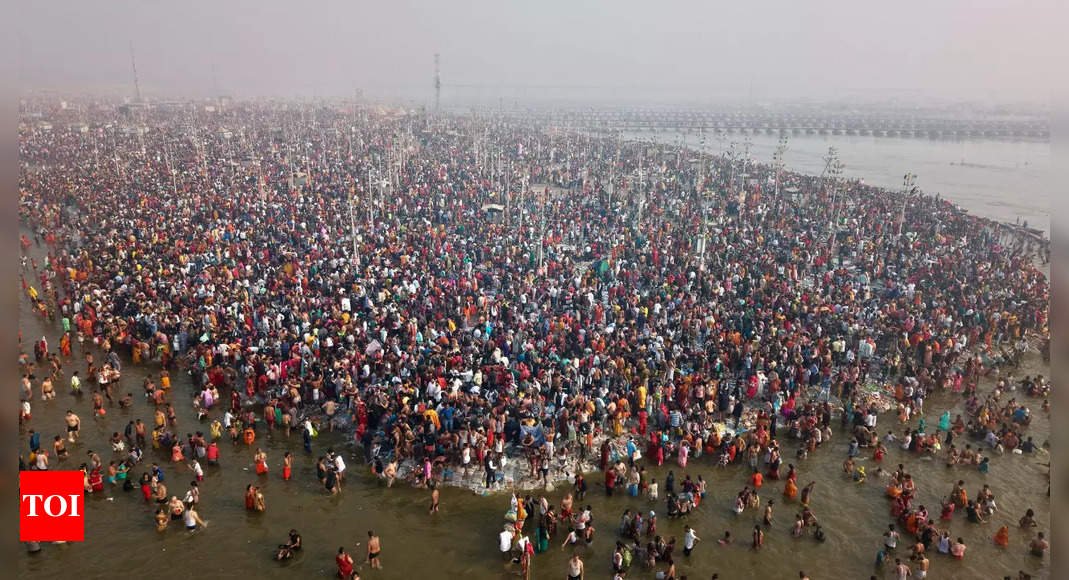New Delhi: el Central Pollution Control Board In his new report he said that the quality of water in the recently concluded Maha Kumbh was “suitable for bathe.” This occurs after the Board had called water in Prayagraj in several places during Kumbh not suitable for bathing due to high levels of fecal bacteria.
In the new February 28 report, the pollution control board said that a statistical analysis was required due to the inconsistencies in the data, since the water samples taken from the same locations on different dates, and of different points the same day, varied significantly. As a result, the findings did not accurately represent the general quality of water throughout the stretch of the river.
“There is a significant variability in the values in several parameters, namely the dissolved oxygen (DO), the biochemical demand of oxygen (BOD) and the fecal coliform count (FC) for the samples taken from the same location on different dates. The values of the mentioned parameters also vary in different locations for the samples collected on the same day,” the report is said.
How the ‘variability in the data’ affected the water quality report?
The report clarified that an expert committee analyzed the issue of data variability and concluded that the findings represent only a snapshot of water quality in a specific location and time.
He stressed that water quality can fluctuate significantly due to several factors, including human activities upstream, flow rate, sampling depth, collection time, river currents, the mixture of currents and exact sampling location, among other influences.
“As a result, these values reflect the water quality parameters at the exact moment and place from which these water samples were collected, and may not completely represent the general characteristics of the river, therefore, they do not necessarily reflect the general quality of the river water in all the stretch of the river,” he said.
What did the previous report say?
The previous report, presented on February 17, said that the quality of water in several places in Prayagraj during Kumbh did not meet primary bath standards due to high levels of fecal coliforms.
“A large number of people bathe in the river in Prayagraj during the Maha Kumbh Mela, even on auspicious bath days, which eventually leads to an increase in fecal concentration,” said the report, and added that the quality of the river water did not adjust to the quality of primary water to bathe with respect to fecal coliforms in all the locations monitored on several occasions. “
How did the government react to the report?
The UP CM Yogi Adityanath had rejected fecal bacteria in Sangam Waters’ claim and had said that Kumbh was suitable for bathing. He had also called it an attempt to defame the religious meeting.
“Questions are being asked about water quality (in Triveni). All pipes and drains inside and around Sangam have stuck and water is released only after purification. The UP pollution control plate continually monitors water to maintain its quality,” he said.
“The reasons for the increase in fecal coliform can be several, such as wastewater leak and animal waste, but the amount of fecal coliforms in Prayagraj is, according to the standards, less than 2,500 MPN per 100 ml. This means that the false campaign is only to defame to the kumbh maha. The NG also said that the fecal waste was less than 2000 mpn mlpn ml,” He added. “He added.




